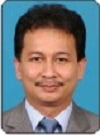The Teaching Constraints of English as a Foreign Language in Indonesia: The Context of School Based Curriculum
Abstract
ABSTRACT: This article presents the teaching constraints of English as a Foreign Language (EFL) in the Indonesian Senior High School context outlined by the development of recent English curriculum (school based curriculum). It discusses teaching constraints of EFL speaking in recent school based curriculum, constraints on understanding learners’ differences, constraints in learning material resources, constraints on classroom activities, constraints on teaching methods, and constraints on speaking assessment. Based on the discussion, this article also provides some solutions on what teachers of EFL speaking can do in order to achieve a higher quality of EFL speaking teaching and to improve the speaking skill of EFL students in Indonesia. Finally, the issue of the contribution of inserting learners’ differences in curriculum design to promote independent or successful learners becomes important in the implementation of school-based curriculum as current curriculum with focusing on learner centered instruction in large and mixed ability class and in other old paradigms in EFL teaching and learning in Indonesia.
Key words: Teaching constraints, English as a Foreign Language, learner differences, and school-based curriculum in Indonesia.


About the Authors: Karim Mattarima is a Ph.D. Candidate at the Faculty of Education UTM (Technology University of Malaysia) in Johor Bahru, Johor, Malaysia; and Assoc. Prof. Dr. Abdul Rahim Hamdan is a Senior Lecturer at the Faculty of Education UTM. They can be reached at: karimmattarima@yahoo.co.id
How to cite this article? Mattarima, Karim & Abdul Rahim Hamdan. (2011). “The Teaching Constraints of English as a Foreign Language in Indonesia: The Context of School Based Curriculum” in SOSIOHUMANIKA: Jurnal Pendidikan Sains Sosial dan Kemanusiaan, Vol.4, No.2 [November], pp.287-300. Bandung, Indonesia: Minda Masagi Press owned by ASPENSI, ISSN 1979-0112.
Chronicle of article: Accepted (September 4, 2011); Revised (October 7, 2011); and Published (November 20, 2011).
Full Text:
PDFReferences
Afrianto. (2007). “Indonesian Teachers’ Perceptions of the High-Stakes English National Examination”. Unpublished Ph.D. Thesis. Melbourne, Australia: Monash University.
Blanchard, P.N. & J.W. Thacker. (2007). Effective Training: Systems, Strategies, and Practices. New Jersey: Pearson Education International.
Dardjowidjojo. (2003). Rampai Bahasa, Pendidikan, dan Budaya. Jakarta: Yayasan Obor Indonesia.
Depdiknas RI [Departemen Pendidikan Nasional Republik Indonesia]. (2006). Pedoman Kurikulum Tingkat Satuan Pendidikan untuk Sekolah Menengah Atas Tahun 2006. Jakarta: Depdiknas RI.
Green, J.M. & R. Oxford. (1995). “A Closer Look at Learning Strategies, L2 Proficiency, and Gender” in TESOL Quarterly, 29(2), pp.261-297.
Hariyanto, S. (1997). ”Achieving a Good Communicative Performance with Better Grammatical Mastery Using ’bridging technique’” in E. Sadtono [ed]. The Development of TEFL in Indonesia. Malang, Indonesia: Penerbit IKIP Malang, pp.110-124.
Killen, Roy. (2004). Programming and Assessment of Quality Teaching and Learning. Newcasle: Thomson Social Science Press.
Lamb, M. (2008). “The Impact of School on EFL Learning Motivation: An Indonesian Case Study” in TESOL Quarterly, 42(1), pp.1-24.
Launder, A. (2008). “The Status and Function of English in Indonesia: A Review of Key Factors” in MAKARA: Seri Sosial Humaniora, 12(1), pp.9-20.
Lestari, Diah Sri. (2007). “Technique for Motivating Students in Learning English”. Unpublished Master Thesis. Yogyakarta: Faculty of Teacher Training and Education, Ahmad Dahlan University.
Manurung, K. (2005). “Instructing Language Learning Strategies to Promote Autonomous Learning” in Indonesian Journal of English Language Teaching, 1(2), pp.178-202.
Marcellino, M. (2005). “Competency-Based Language Instruction in Speaking Classes: Its Theory and Implementation in Indonesian Contexts” in Indonesian Journal of English Language Teaching, 1(1), pp.33-44.
Marcellino, M. (2008). “English Language Teaching in Indonesia: A Continuous Challenge in Education and Cultural Diversity” in TEFLIN Journal, 19(1).
Mukminatien, N. (1995). “The Scoring Procedures of Speaking Assessment” in English Language Education, 5(1), pp.17-25.
Murdibjono. (1998). “Teaching Speaking: From Form-Focused to Meaning-Focused Instruction” in English Language Education, 4(1), pp.1-12.
Oxford, R.L. (1990). Language Learning Strategies: What Every Teacher Should Know. New York: Newbury House Publisher.
Oxford, R.L. (1996). “Employing a Questionnaire to Assess the Use of Language Learning Strategies” in Applied Language Learning, 7(1-2), pp.22-45.
Padmadewi, N.N. (1998). “Students’ Anxiety in Speaking Class and Ways of Minimizing it” in Jurnal Ilmu Pendidikan, 5 [Supplementary Edition], pp.60-67.
Panggabean, H. (2007). “How to Motivate English Learners Faced with Psychological Burden” in Kata, 9(2), pp.158-168.
Rachmajanti, S. (1995). “The Role of the Combining Arrange in the Speaking Class” in English Language Education, 1(1), pp.8-16.
Richards, J.C. & T.S. Rodgers. (2001). Approaches and Methods in Language Teaching. Cambridge: Cambridge University Press.
Riggenbach, H. & A. Lazaraton. (1991). “Promoting Oral Communication Skills” in M. Celce-Murcia [ed]. Teaching English as Second Language or Foreign Language. Boston: Heinle & Heinle, 2nd edition, pp.125-136.
Samad, M.Y. (1989). “The Speaking Ability of the Third Semester Students of FPBS IKIP Ujungpandang”. Unpublished Master Thesis. Ujung Pandang, Indonesia: FPBS IKIP [Fakultas Pendidikan Bahasa dan Sastra, Institut Keguruan dan Ilmu Pendidikan] Ujungpandang.
Siregar, F.L. (2010). “The Language Attitudes of Students of English Literature and D3 English at Maranatha Christian University toward American English, British English, and Englishes in Southeast Asia, and Their Various Contexts of Use in Indonesia” in Philippine ESL Journal, 4, pp.66-92.
Suyuti et al. (1985). “Kemampuan Mengembangkan Ide Pokok Mahasiswa Semester III Jurusan Pendidikan Bahasa Inggris FPBS IKIP Ujungpandang”. Unpublished Research Report. Ujung Pandang, Indonesia: FPBS IKIP [Fakultas Pendidikan Bahasa dan Sastra, Institut Keguruan dan Ilmu Pendidikan] Ujungpandang.
Thalal, M. (2010). “New Insight into Teaching of English Language to Indonesian Students”. Unpublished paper.
Tin, Tan Bee et al. (2010). “Views on Creative from an Indonesian Perspective” in ELT Journal, 64(1), pp.75-84.
Tutyandari, C. (2005). “Breaking the Silent of the Students in an English Language Class”. Paper presented at the 53rd TEFLIN International Conference in Yokyakarta, Indonesia.
White, C. (2008). “Language Learning Strategies in Independent Language Learning: An Overview” in S. Hurd & T. Lewis [eds]. Language Learning Strategies in Independent Settings. UK: Multilingual Matters, pp.3-25.
Widiati, U. & B.Y. Cahyono. (2006). “The Teaching of EFL Speaking in the Indonesian Context: The State of the Art” in Junal Bahasa dan Seni, 2(34), pp.269-292.
Yuliastri, I. (2005). “Minimizing Subjectivity in Assessing Speaking”. Paper presented at LIA International Conference in Jakarta, Indonesia.
SOSIOHUMANIKA: Jurnal Pendidikan Sains Sosial dan Kemanusiaan is published by Minda Masagi Press. This work is licensed under a Creative Commons Attribution-Sharealike 4.0.
